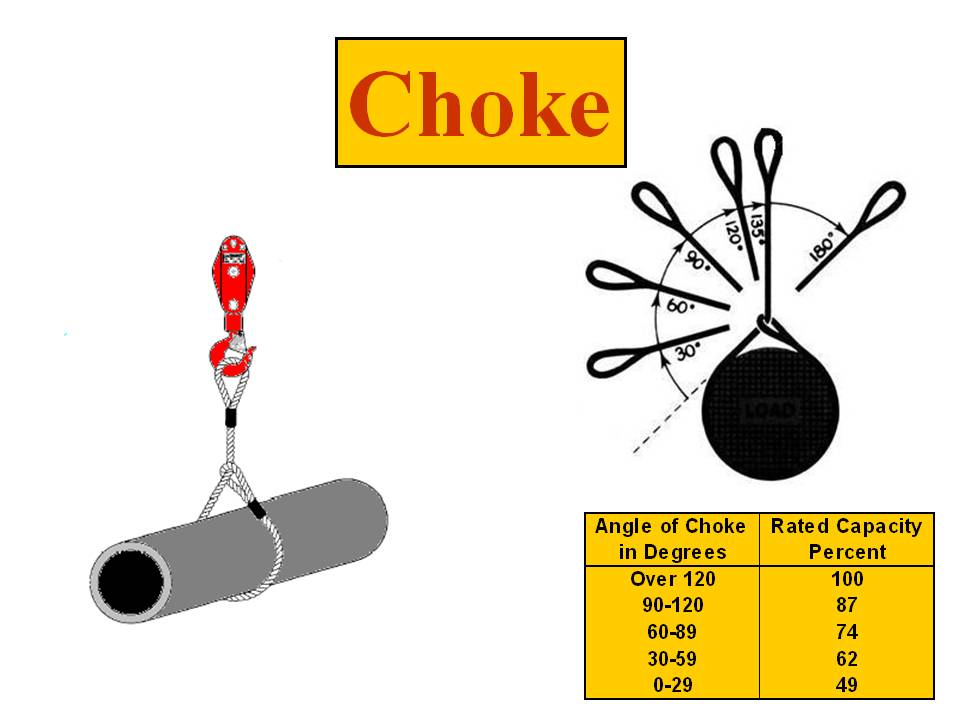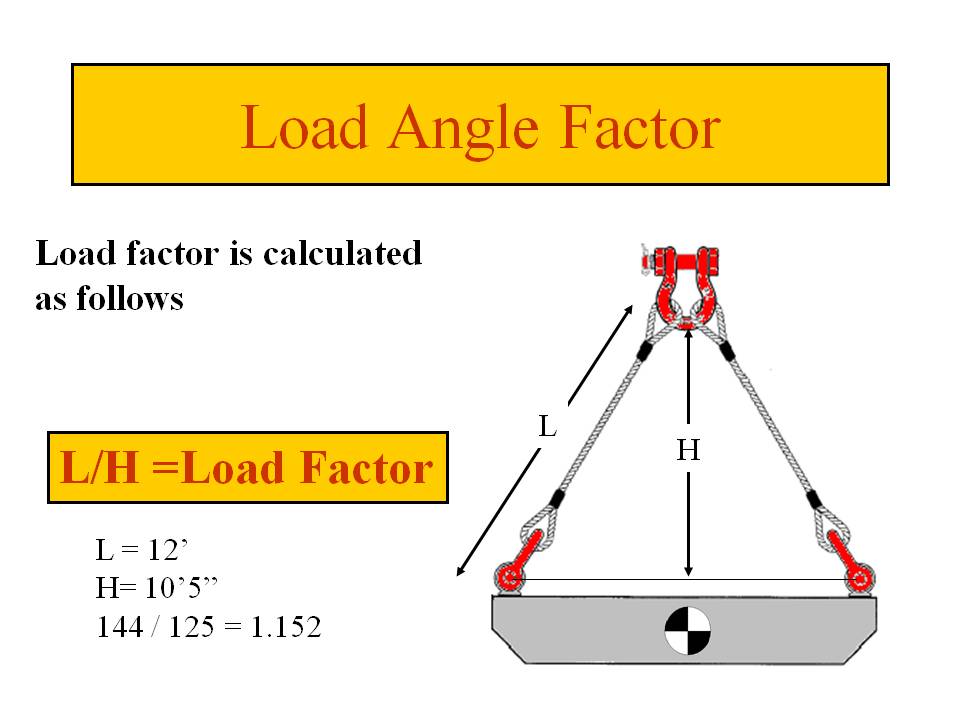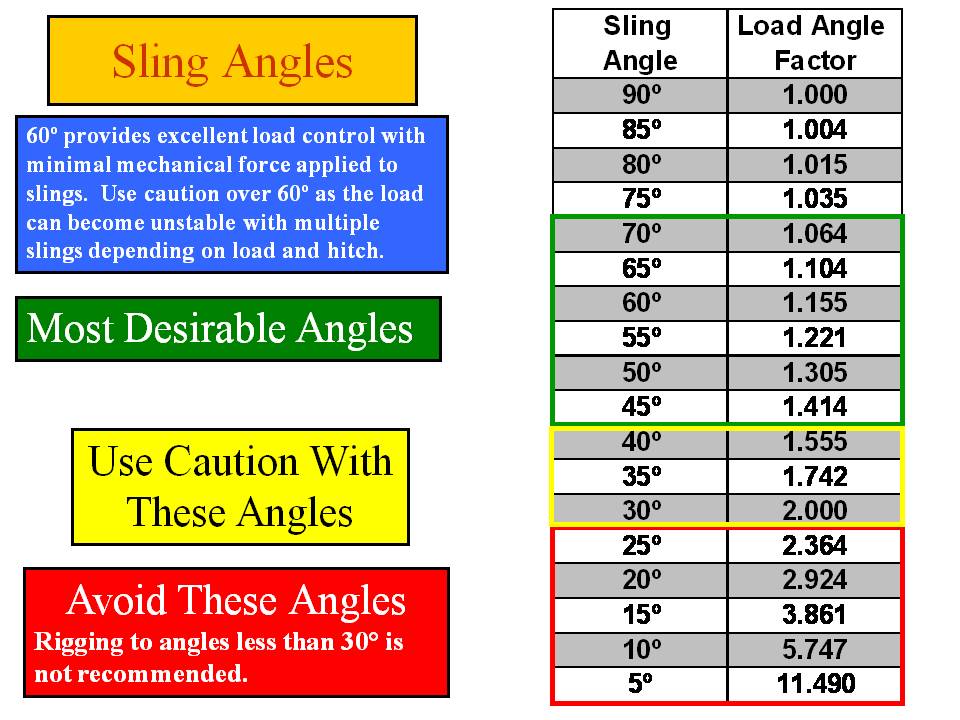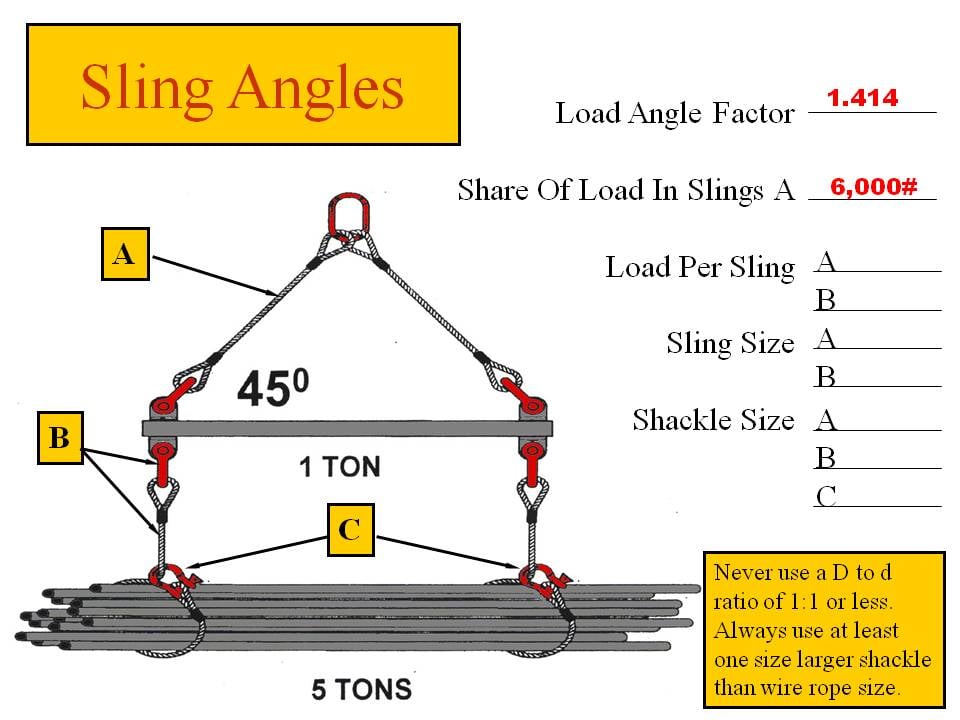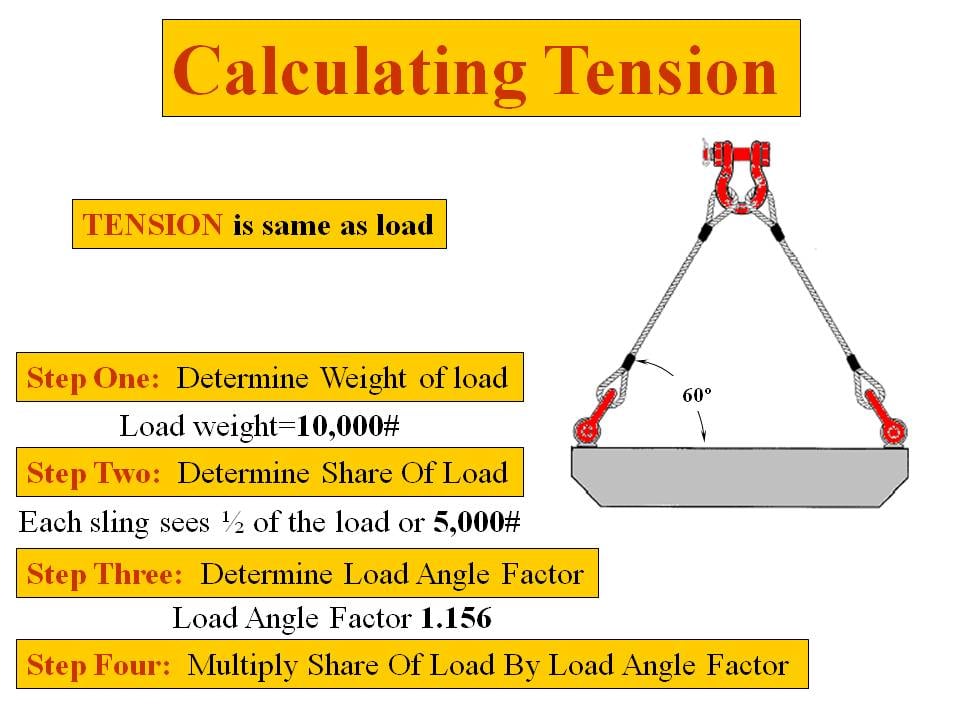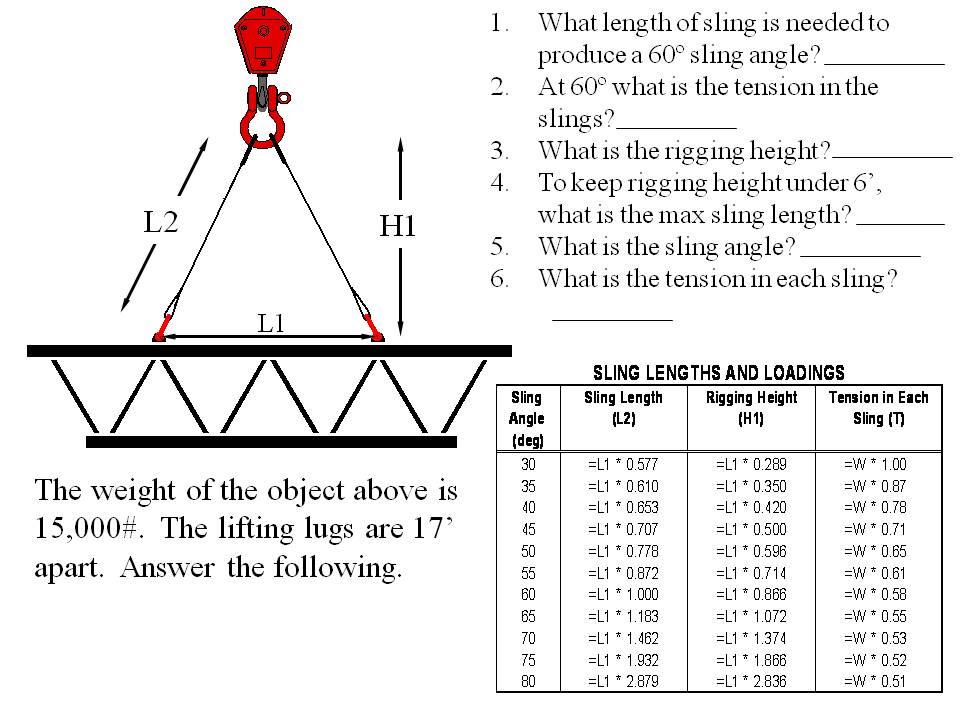Unit 4c (Crane Rigging Exercise)

This quiz is based on the Kiewit Rigging Triangle training module. This should provide a modest challenge to your rigging capabilities. Grab a calculator and some scrap paper. Best of luck!
You must complete Unit 4C (Crane Rigging Exercise) with a score of 90% or higher. This will conclude all quizzes in Unit 4.
- 1.
If you are picking something that would result in a choker angle of 40 degrees, how much of the rated capacity can you use?
- A.
49%
- B.
62%
- C.
74%
- D.
87%
Correct Answer
B. 62%Explanation
When picking something with a choker angle of 40 degrees, the amount of the rated capacity that can be used is 62%. The choker angle is the angle formed between the sling and the object being lifted. As the choker angle decreases, the tension on the sling increases, reducing its capacity. At a choker angle of 40 degrees, 62% of the rated capacity can be used, indicating that the lifting capacity is reduced due to the angle.Rate this question:
-
- 2.
If your L is 10 feet and your H is 8 feet what is your Load Factor?
- A.
0.8
- B.
1.25
- C.
1.67
- D.
1.22
Correct Answer
B. 1.25Explanation
10 feet x 12 inches = 120 inches divided by 8 feet x 12 inches = 96 inches.
120/96 = 1.25Rate this question:
-
- 3.
What would be the most preferred sling angle?
- A.
65 Degrees
- B.
5 Degrees
- C.
45 Degrees
- D.
30 Degrees
Correct Answer
A. 65 DegreesExplanation
A sling angle of 65 degrees would be the most preferred because it provides the optimal balance between load stability and sling capacity. This angle helps distribute the load evenly across the sling and minimizes stress on the lifting equipment. A smaller angle may result in reduced lifting capacity and increased stress on the sling and equipment, while a larger angle may decrease stability and increase the risk of load tipping or sliding. Therefore, a sling angle of 65 degrees is the best choice for ensuring safe and efficient lifting operations.Rate this question:
-
- 4.
Calculate the load per sling, sling size and shackle size.
- A.
7000, 5/8, 3/4
- B.
8085, 5/8, 3/4
- C.
14000, 5/8, 3/4
- D.
7000, 3/4, 7/8
- E.
8085, 3/4, 7/8
Correct Answer
E. 8085, 3/4, 7/8 -
- 5.
Calculate the load per sling, sling size, and shackle size.
- A.
25,000 pounds; 1-1/4" sling; 1-3/8" shackle
- B.
25,000 pounds; 1-3/8" sling; 1-1/2" shackle
- C.
12,500 pounds; 1" sling; 1-1/8" shackle
- D.
12,500 pounds; 7/8" sling; 1" shackle
Correct Answer
A. 25,000 pounds; 1-1/4" sling; 1-3/8" shackleExplanation
The correct answer is 25,000 pounds; 1-1/4" sling; 1-3/8" shackle. This answer is correct because it provides the appropriate load per sling, sling size, and shackle size for the given situation. The load per sling is 25,000 pounds, which matches the weight specified in the question. The sling size is 1-1/4", which is the correct size to handle the given load. The shackle size is 1-3/8", which is also appropriate for the load.Rate this question:
-
- 6.
Calculate the load per sling, sling size and shackle size for A B and C. (Choose the two correct answers.)
- A.
Side A = 8,484 pounds; 7/8 sling; 1 shackle C = 7/8 shackle
- B.
Side B = 5,000 pounds; 7/8 sling; 1 shackle C = 7/8 shackle
- C.
Side A = 8,484 pounds; 3/4 sling; 7/8 shackle C = 7/8 shackle
- D.
Side B = 5,000 pounds; 3/4 sling; 7/8 shackle C = 7/8 shackle
Correct Answer(s)
C. Side A = 8,484 pounds; 3/4 sling; 7/8 shackle C = 7/8 shackle
D. Side B = 5,000 pounds; 3/4 sling; 7/8 shackle C = 7/8 shackleExplanation
The correct answers are Side A = 8,484 pounds; 3/4 sling; 7/8 shackle C = 7/8 shackle and Side B = 5,000 pounds; 3/4 sling; 7/8 shackle C = 7/8 shackle. These answers are correct because they provide the necessary information for calculating the load per sling, sling size, and shackle size for both sides A and B. The given information includes the weight, sling size, and shackle size for each side, allowing for the calculations to be performed accurately.Rate this question:
-
- 7.
What is the tension or load going into the slings?
- A.
5,780 Pounds
- B.
5,000 Pounds
- C.
5,465 Pounds
- D.
5,825 Pounds
Correct Answer
A. 5,780 PoundsExplanation
The given answer of 5,780 pounds is the tension or load going into the slings.Rate this question:
-
- 8.
Calculate the share of the load, sling size, and shackle size for A and B. (Select the 2 correct answers.)
- A.
Side A = 2,800; 5,600; 5/8 sling; 3/4 shackle
- B.
Side A = 7,200; 8,640; 3/4 sling; 7/8 shackle
- C.
Side B = 7,200; 8,640; 3/4 sling; 7/8 shackle
- D.
Side B = 2,800; 5,600; 5/8 sling; 3/4 shackle
Correct Answer(s)
A. Side A = 2,800; 5,600; 5/8 sling; 3/4 shackle
C. Side B = 7,200; 8,640; 3/4 sling; 7/8 shackle -
- 9.
- A.
17 feet; 8,460 Pounds; 172-5/8 inches; 133 inches; 30 degree; 13,050 pounds
- B.
17 feet; 8,700 Pounds; 176-5/8 inches; 124 inches; 35 degree; 13,050 pounds
- C.
16 feet; 8,700 Pounds; 176-5/8 inches; 124 inches; 35 degree; 13,050 pounds
Correct Answer
B. 17 feet; 8,700 Pounds; 176-5/8 inches; 124 inches; 35 degree; 13,050 pounds -
Quiz Review Timeline +
Our quizzes are rigorously reviewed, monitored and continuously updated by our expert board to maintain accuracy, relevance, and timeliness.
-
Current Version
-
Mar 20, 2023Quiz Edited by
ProProfs Editorial Team -
Apr 12, 2009Quiz Created by
Kiewitsafe
 Back to top
Back to top



